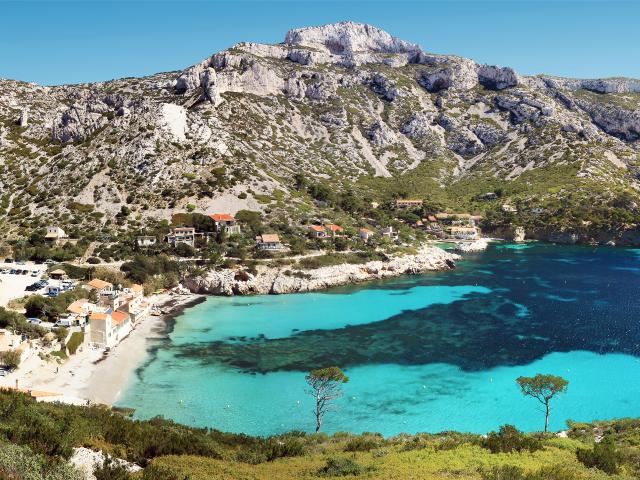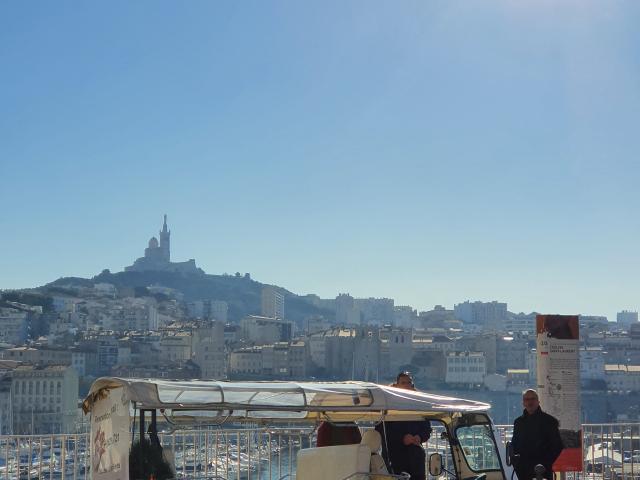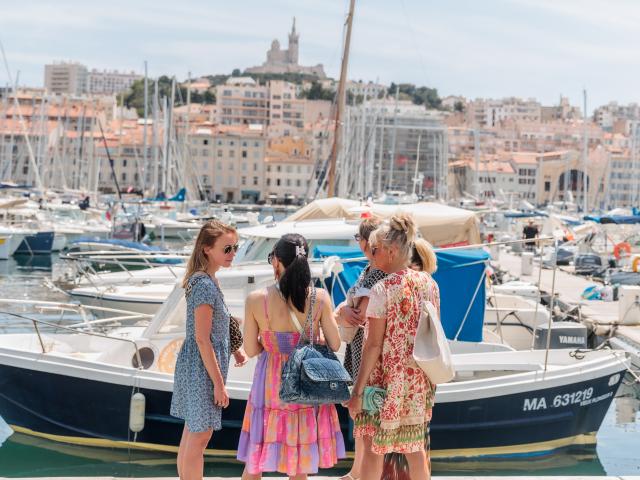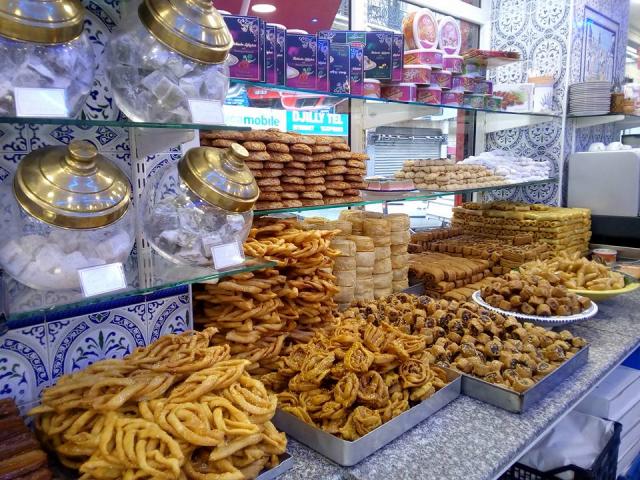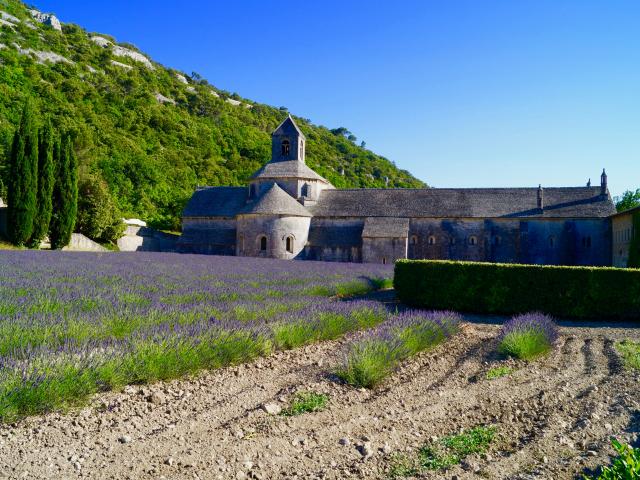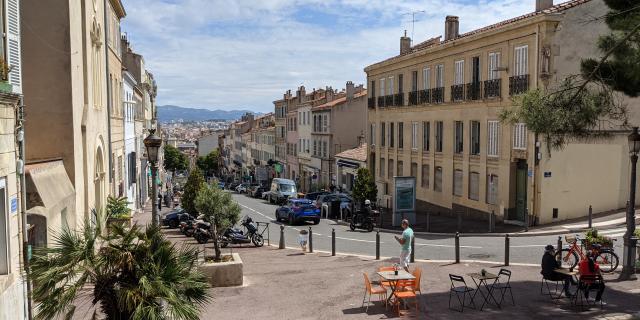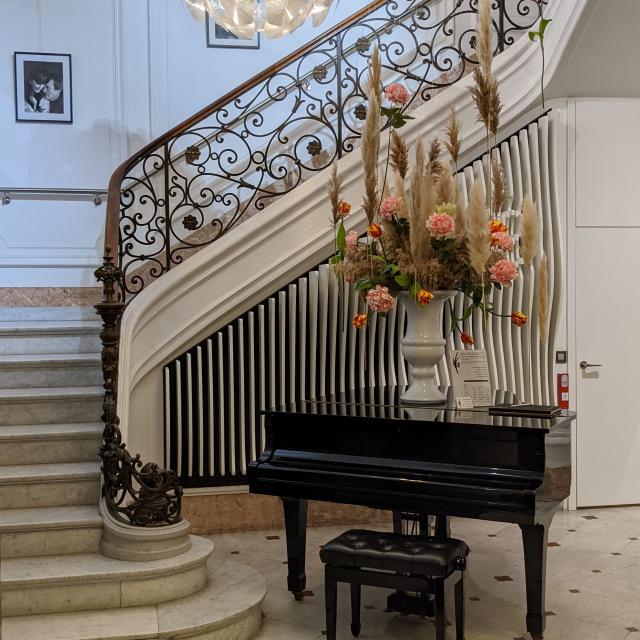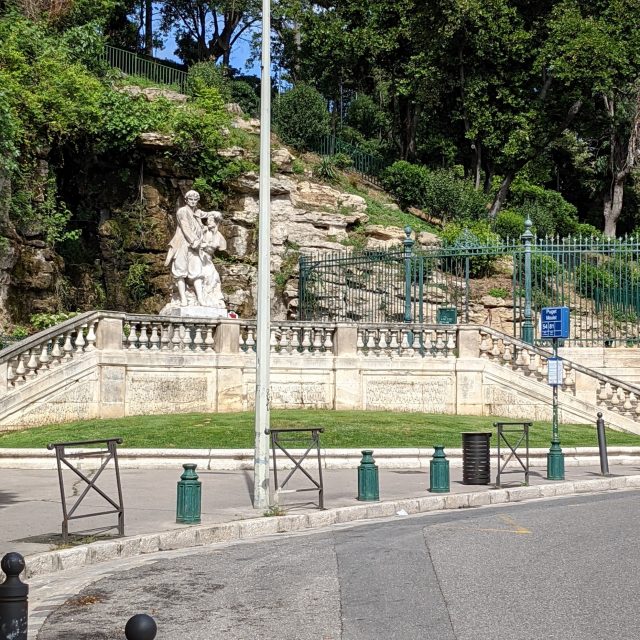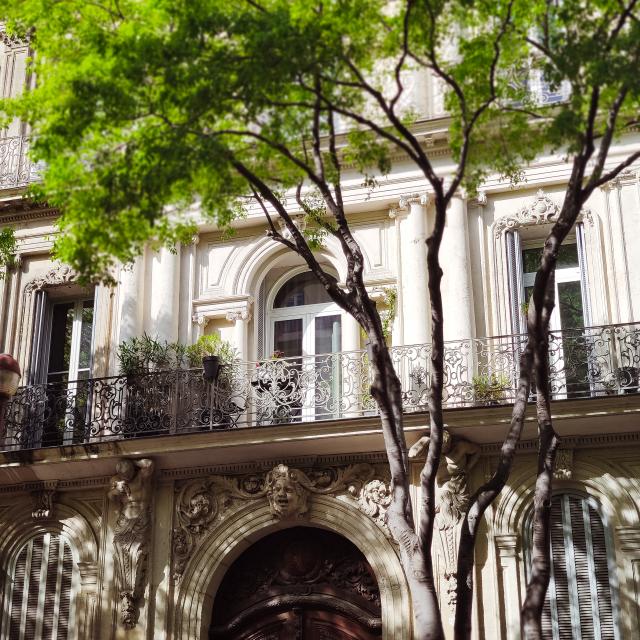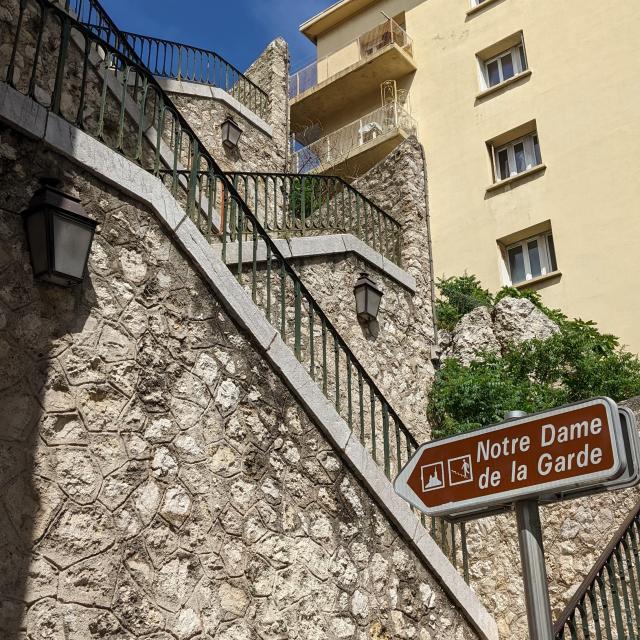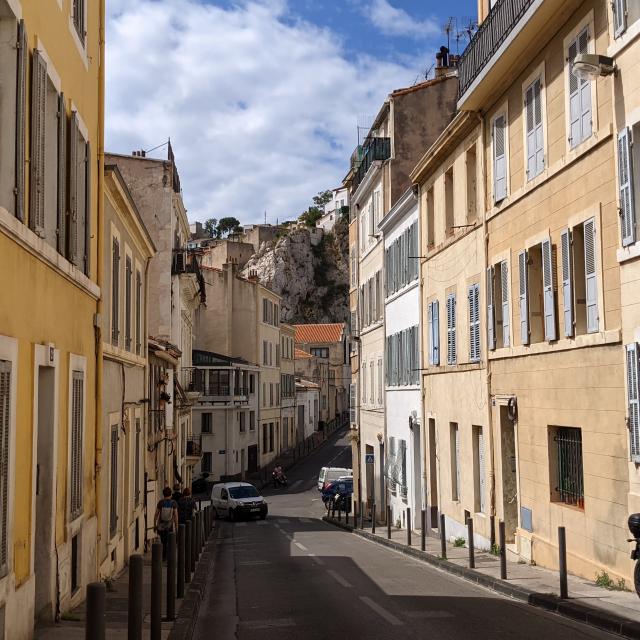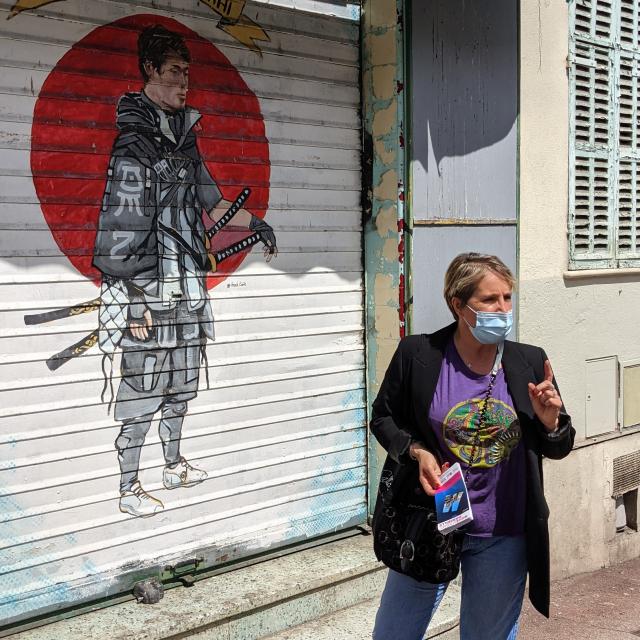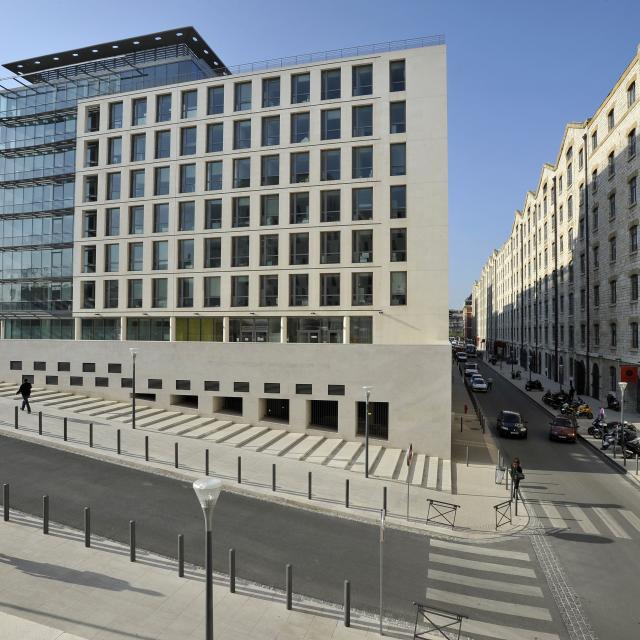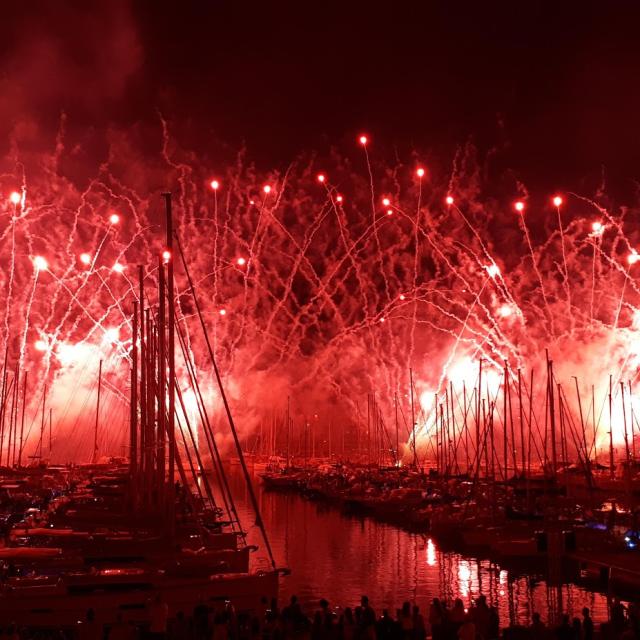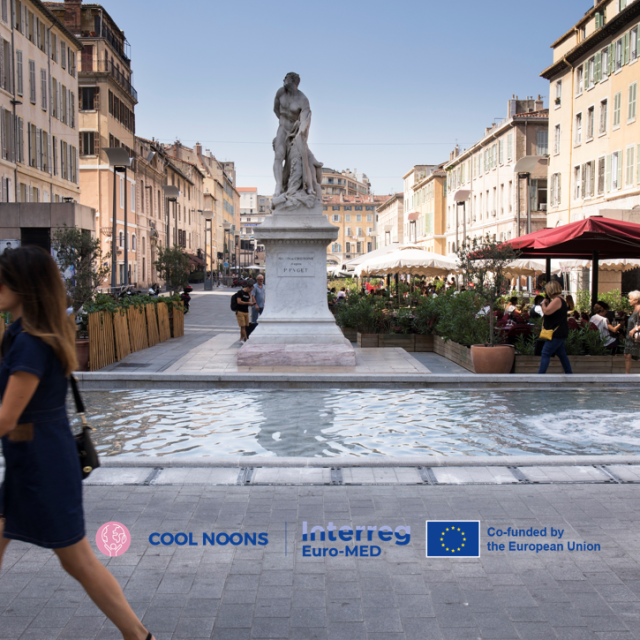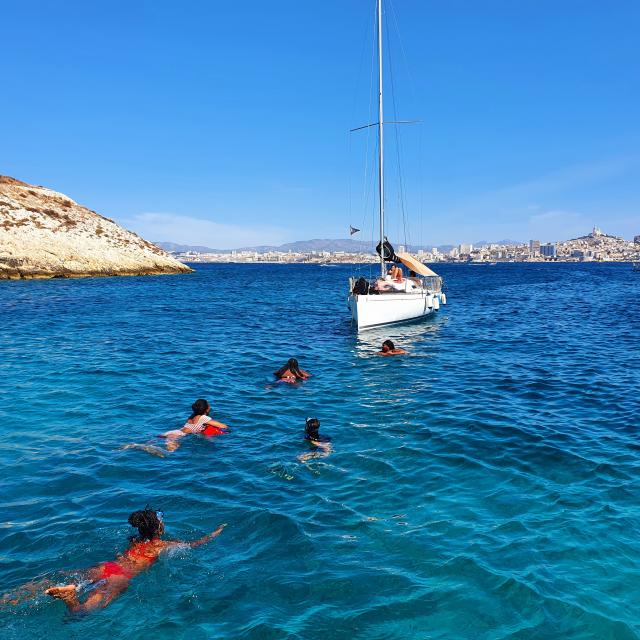A new borough south of the ‘Vieux-Port’ (old-port)
Marseille’s development
The meeting is fixed at 10 am this morning, at the “Puget-Moulet” bus stop, at the bottom of the Puget hill. Our guide Alexandra welcomes us and delighted to be able to guide tours again. After checking the presence of all the registered visitors and before starting our tour, she tells us about Marseille and the city’s development in history. You have to know that since its foundation by the Phoceans in 600 before JC and until the 18th century, Marseille has never left the north shore of the port, today named ‘le Panier’. On the south bank, there was only the watchtower of Notre-Dame de la Garde, the Saint-Victor Abbey, and the ‘arsenal des galères’ (the galley arsenal).
The Cours Pierre Puget is located on an ancient city rampart. Its arrangements thought out by the prefect Delacroix, transforms it into a beautiful tree-lined artery, with elegant private mansions on both sides. Here, people lived aside from all the agitation of the port, the city centre, in the heart of a new suburb chosen by the important traders and financial workers families of Marseille.
Diverse architecture
We mark a first stop at the C2 hotel where Alexandra explains to all us the specificities of the surrounding architecture. She explains how to distinguish the private hotel, that evolves into an investment property from the classical, “3 windows” of Marseille.
The particularity of the Vauban district also shows us how the bourgeoisie and the more modest population, even the working class, coexisted in harmony.
The cleanliness of the streets, the air quality, the distance from epidemics (plague, diphtheria, cholera, smallpox…) were problems that inhabitants had to face in the 18th and 19th century.
